The scene of poverty, pain, and desolation is truly heart-wrenching. More than 40 million homeless people were roaming across war-torn China in 1942, a tragic chapter of history expertly rendered in "Refugees," a figure painting by Jiang Zhaohe. It's the first sweeping portrayal of such darkness and suffering in the history of Chinese ink painting.
Produced by China Media Group, the documentary series "Fine Arts in China" zeroes in on the suffering the Chinese people endured in wartime through its detailed analysis of this evocative work of art, leading the audience to feel the power and magnitude of this unforgettable painting.
10:55
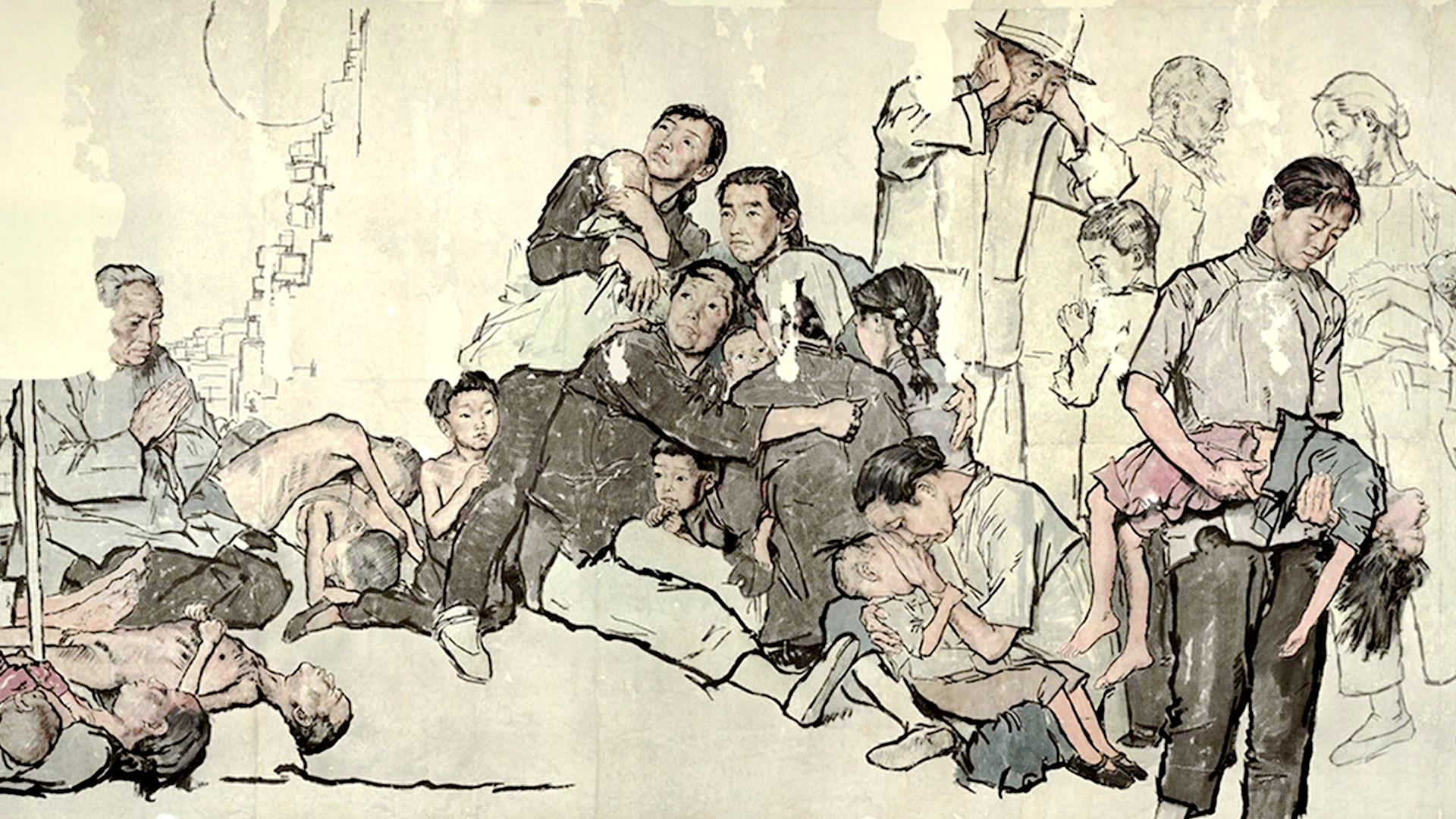
A giant 2-meter by 27-meter canvas containing more than 100 life-size figures, the epic work "Refugees" utilizes the artistic vocabulary of realism to present the poignant tragedy of the war. The original painting included two volumes, the first half of which is now housed at the National Art Museum of China after it was restored, while the second half was tragically destroyed during the war. The only existing full reproduction of "Refugees" is at the Luzhou Museum in southwest China's Sichuan.

Details of "Refugees" by Jiang Zhaohe. /CGTN
Details of "Refugees" by Jiang Zhaohe. /CGTN
Jiang began to conceive of "Refugees" in 1941 and completed it two years later. During this time, he visited Shanghai, Nanjing, and other areas occupied by the Japanese army so he could experience real life on the ground under such conditions. The painting's depiction of farmers, workers, intellectuals, elderly people, women and children struggling to face up to death during this incredibly dark period is extremely moving. Under Jiang's skillful strokes, spectators cannot help but feel sympathy, pity and awe at the same time as they gaze upon this oil painting masterpiece.
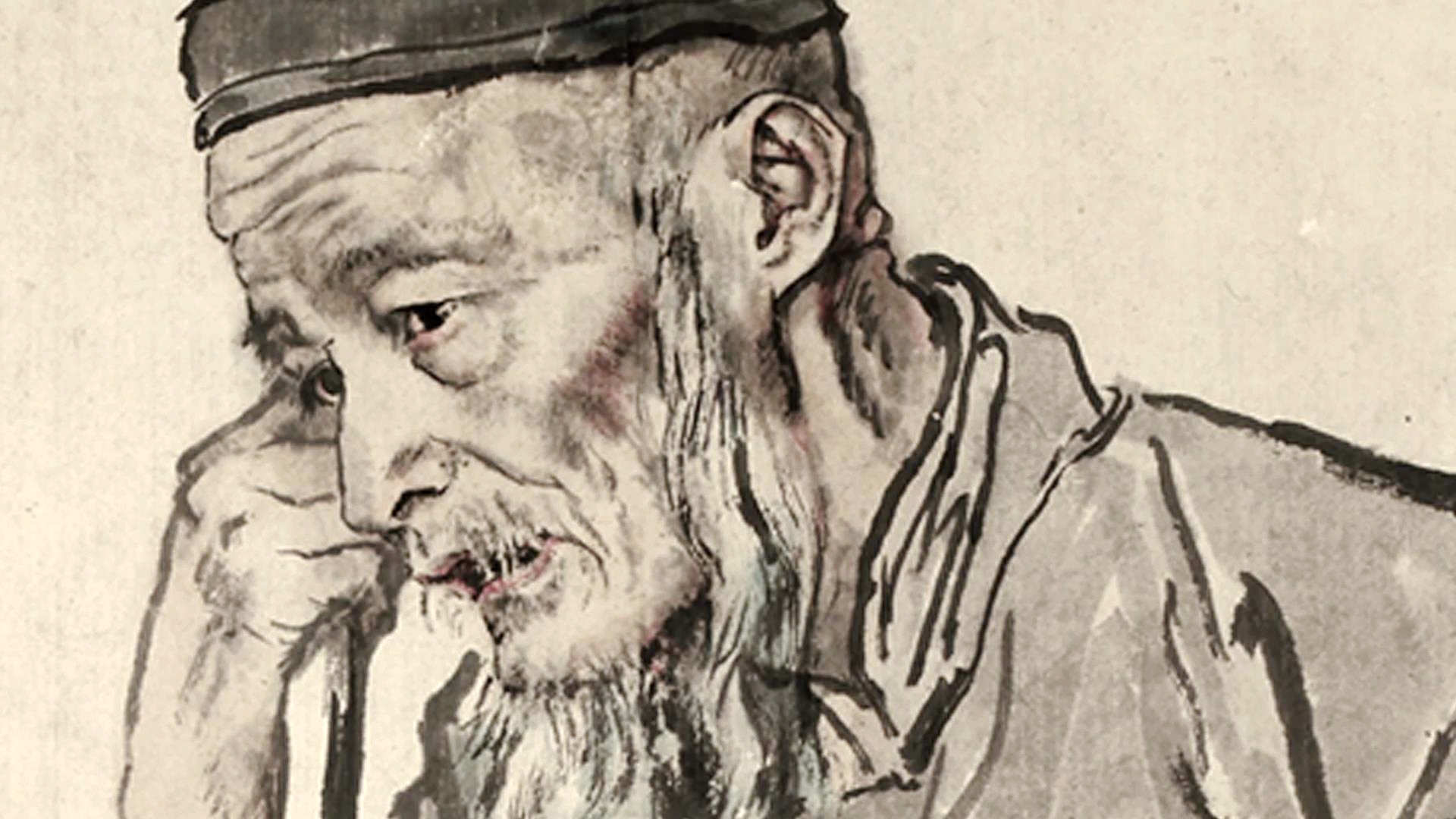
Details of "Refugees" by Jiang Zhaohe. /CGTN
Details of "Refugees" by Jiang Zhaohe. /CGTN
In Chinese ink-wash paintings of yore, meticulous delineation was always stressed at the expense of realistic modeling. Jiang blazed a new trail. His varied brushwork rendered a realistic sense of volume to the rugged skin, bones and muscles underneath. The lateral application of ink left elusive trails of tears. The subtlety of his shifting texture made the fabrics almost tangible. The colors, though plain and spare, proved powerful and effective.
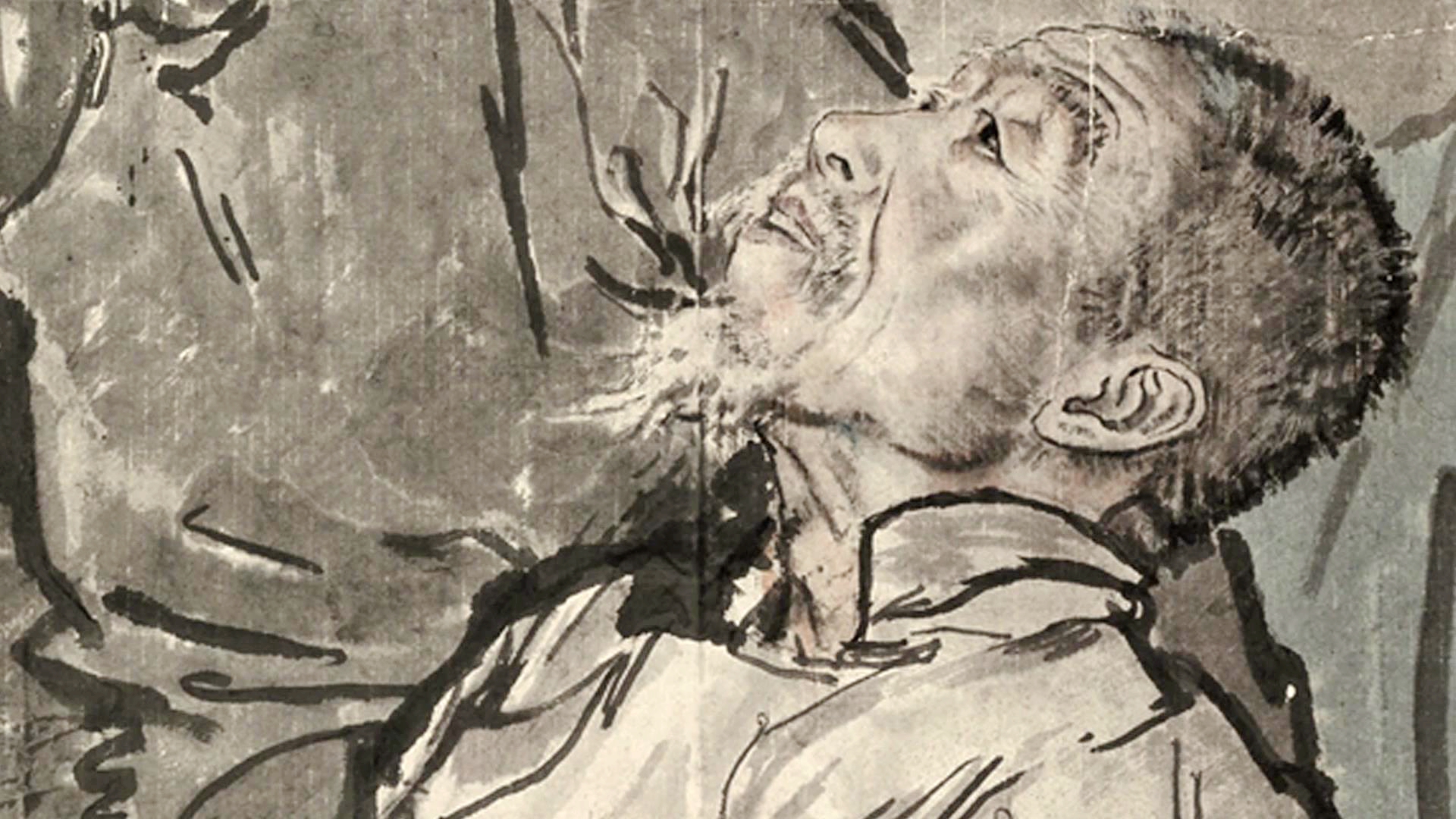
Details of "Refugees" by Jiang Zhaohe. /CGTN
Details of "Refugees" by Jiang Zhaohe. /CGTN
In addition, the painting expresses the desire for peace and justice and bursts with praise for the human spirit and its unyielding strength. It is regarded as a key work in modern Chinese ink-wash figure painting and a powerful statement in the global war against fascism.
The value of "Refugees" lies not only in its spiritual power but also in its artistic breakthroughs. The painter combines Chinese line drawing with the lighting and shading techniques popular in the West to represent the peak of Chinese portrait painting.
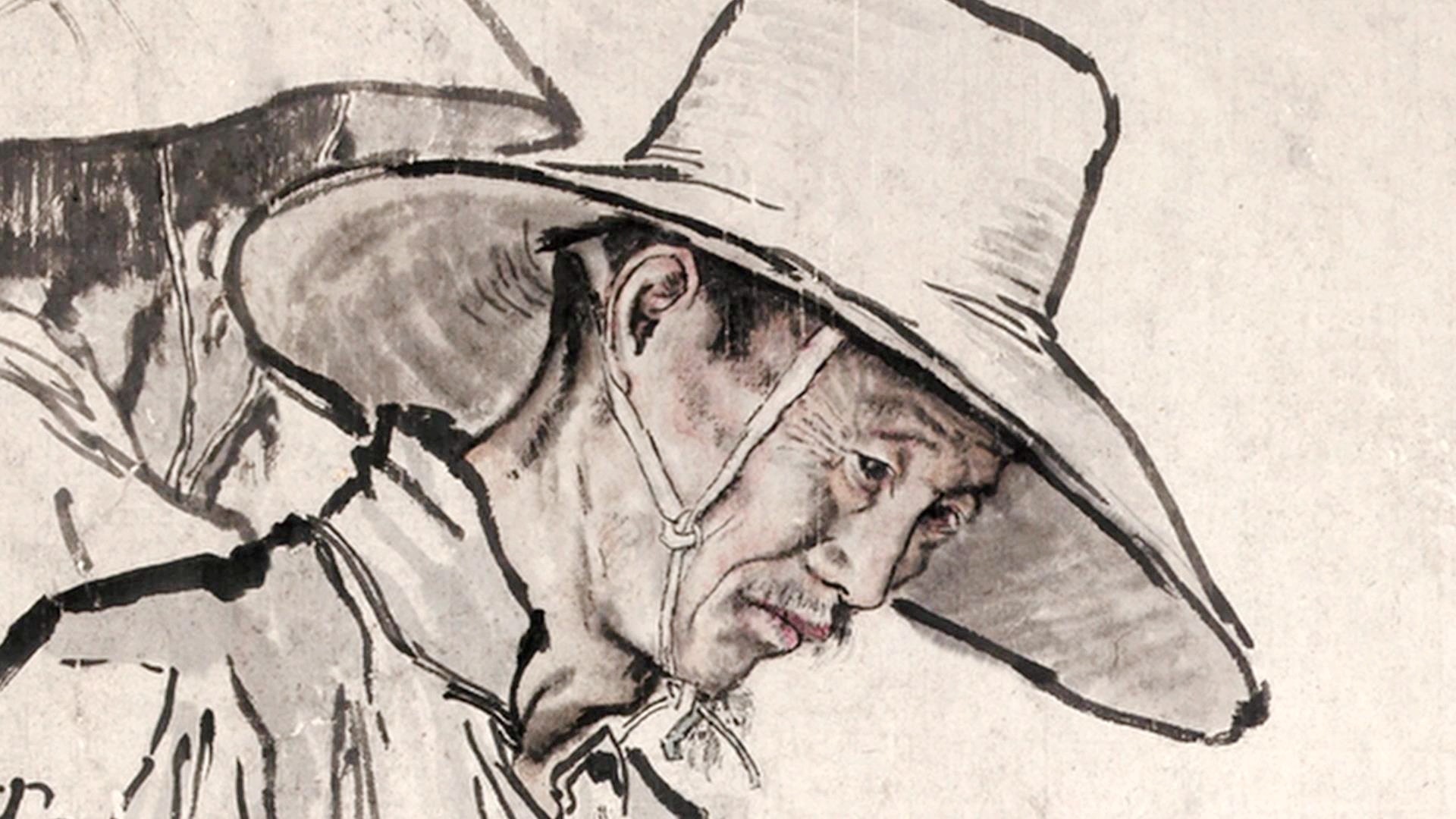
Details of "Refugees" by Jiang Zhaohe. /CGTN
Details of "Refugees" by Jiang Zhaohe. /CGTN
A deep concern for the fate of the people living at the bottom rungs of society serves as the primary subject of Jiang's art. He used his brush to serve the country and its people with his deeply rooted humanitarian perspective. Known as a master of modern Chinese ink painting, Jiang expanded the creative skills of traditional Chinese painting and pushed modern figure painting to a new high.
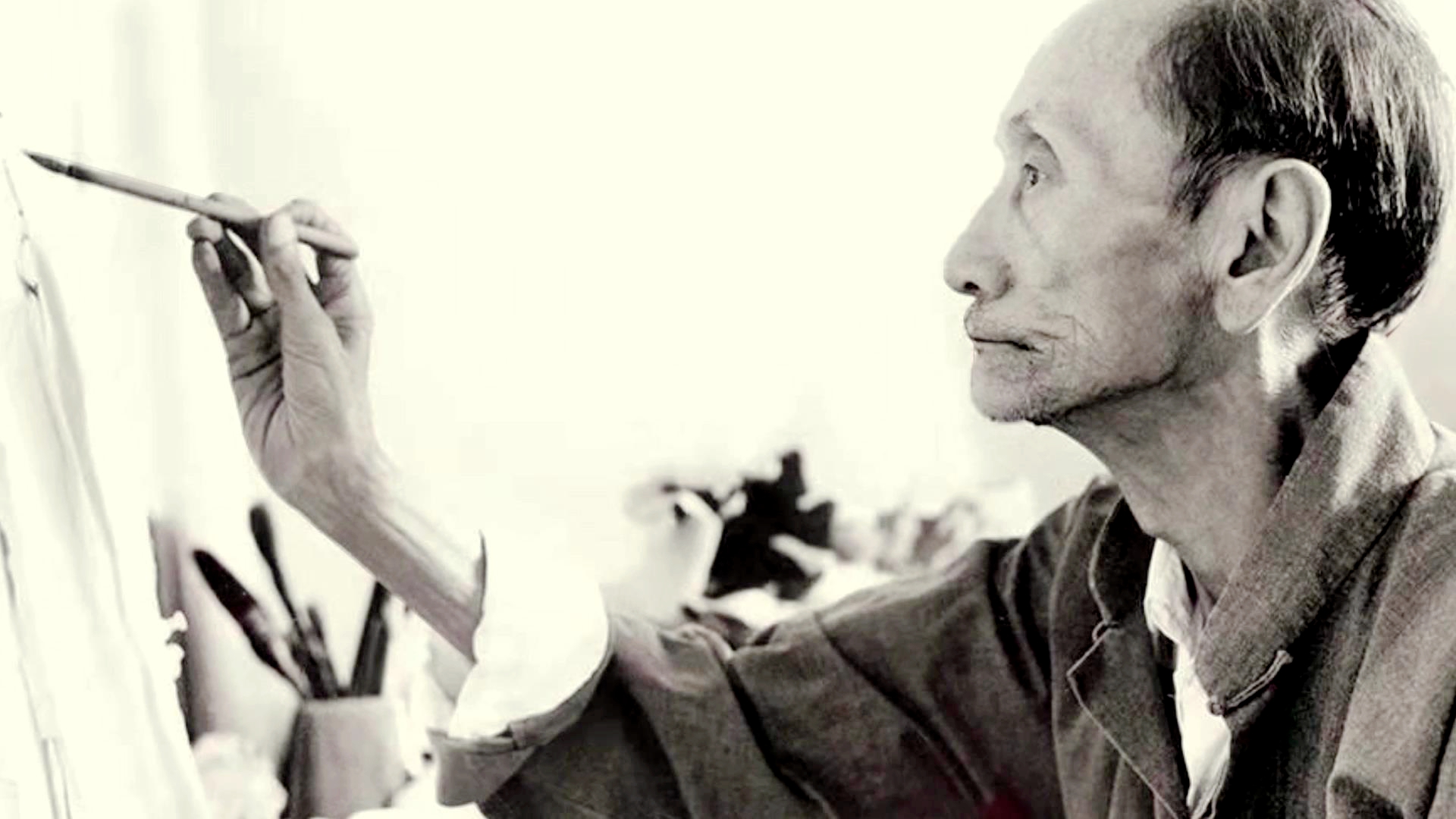
Chinese painter Jiang Zhaohe. /CGTN
Chinese painter Jiang Zhaohe. /CGTN

